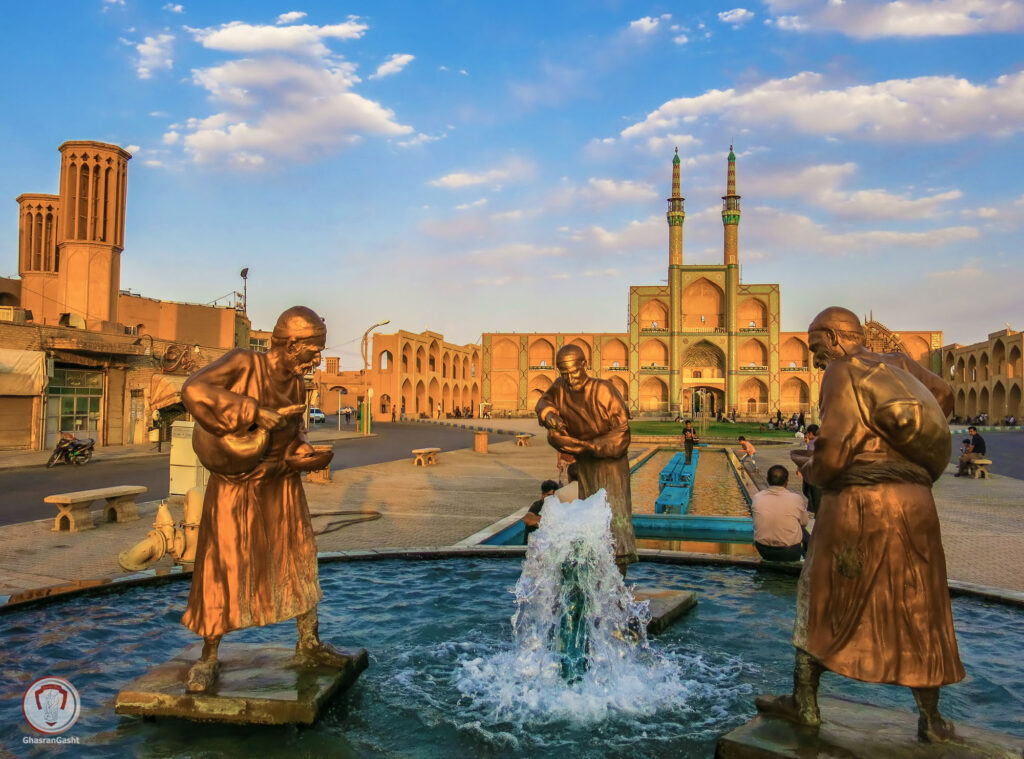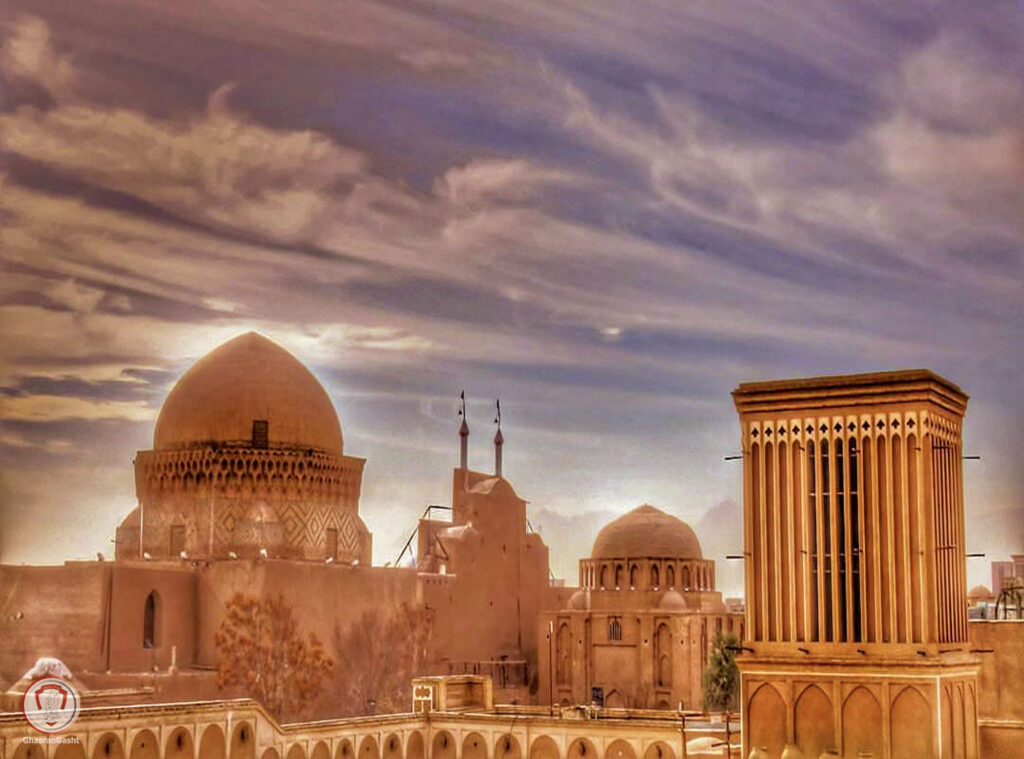Covering an area of 70011 square km , Yazd is the capital of Yazd Province, Iran, and a centre of Zoroastrian culture. The city is located 270 km (170 mi) southeast of Isfahan. At the 2011 census, the population was 1,074,428 in 270٬575 families. Because of generations of adaptations to its desert surroundings, Yazd is an architecturally unique city.
History:
Yazd has a history of over 5,000 years, dating back to the time of the Median empire, when it was known as “Ysatis” (or “Issatis”). The present city name, however, is derived from Yazdegerd I, a Sassanid ruler. The city was definitely a Zoroastrian centre during Sassanid times. After the Arab Islamic conquest of Persia, many Zoroastrians migrated to Yazd from neighbouring provinces. By paying a levy, Yazd was allowed to remain Zoroastrian even after its conquest, and Islam only gradually became the dominant religion in the city.
Because of its remote desert location and the difficulty of access, Yazd remained largely immune to large battles and the destruction and ravages of war. For instance, it was a haven for those fleeing from destruction in other parts of Persia during the Mongol invasion. In 1272 it was visited by Marco Polo, who remarked on the city’s fine silk-weaving industry
Yazd briefly served as the capital of the Muzaffarid Dynasty in the fourteenth century, and was unsuccessfully besieged in 1350–1351 by the Injuids under Shaikh Abu Ishaq. The Friday (or Congregation) Mosque, arguably the city’s greatest architectural landmark, as well as other important buildings, date to this period. During the Qajar dynasty (18th Century AD) it was ruled by the Bakhtiari Khans.
Under the rule of the Safavid (16th century), some people migrated from Yazd and settled in an area that is today on the Iran-Afghanistan border. The settlement, which was named Yazdi, was located in what is now Farah City in the province of the same name in Afghanistan. Even today, people from this area speak with an accent very similar to that of the people of Yazd.
Climate and weather:
Yazd is considered to have a desert climate. In Yazd, there is virtually no rainfall during the year. The least amount of rainfall occurs in June. The average in this month is 0 mm. With an average of 11 mm, the most precipitation falls in February.
The temperatures are highest on average in July, at around 31.7 °C. January has the lowest average temperature of the year. It is 6.3 °C.
Demographics:
Yazdis are mostly Persians but very few minorities can also be observed. Most of Yazidis are twelver Shia muslims, but also there are groups of people following various sects of zoroastrianism and Judaism.
Transportation:
All sorts of public transportation is available in yazd such as buses and taxis. Yazd also has a bus terminal , a railway station and an airport ( Shahid Sadooghi Airport ) which handles domestic flights and ones to Syria , Iraq and Saudi Arabia ( in Hajj season )
Tourism:
Regarding its historical background Yazd is the home to many historical sites such as: Jame Mosque and the Amir Chakhmagh Mosque , tourist can also take various souvenirs from Yazd including : Delicious confectionery and silk weaving products.



